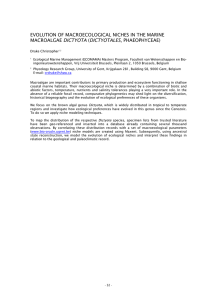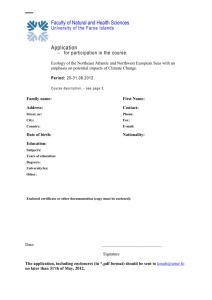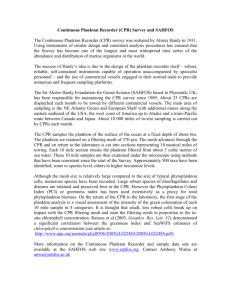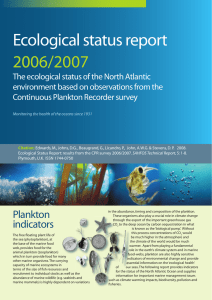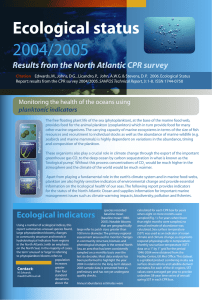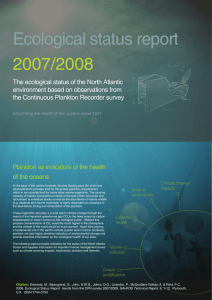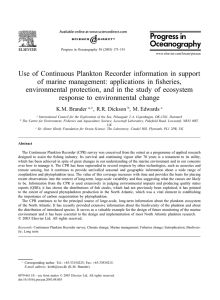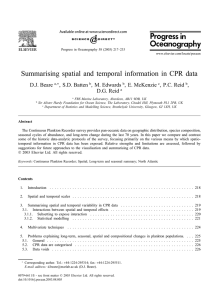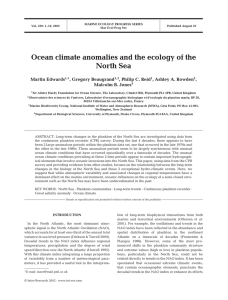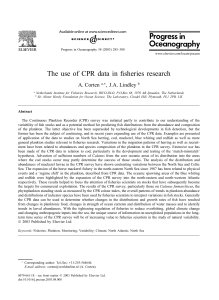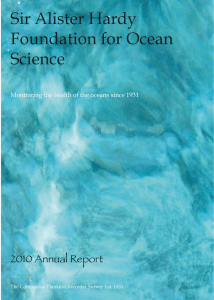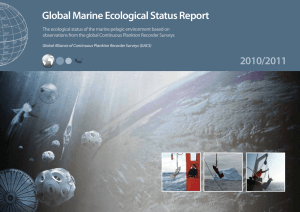Why is it so hard to set MSFD indicators and... the plankton
advertisement
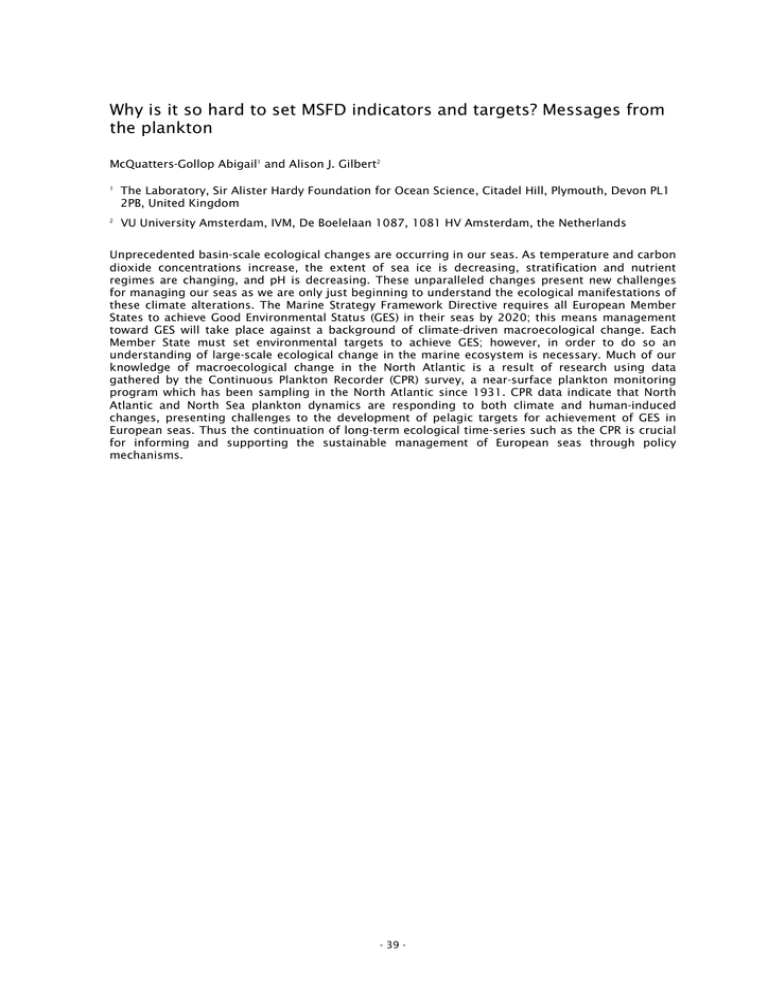
Why is it so hard to set MSFD indicators and targets? Messages from the plankton McQuatters-Gollop Abigail1 and Alison J. Gilbert2 1 The Laboratory, Sir Alister Hardy Foundation for Ocean Science, Citadel Hill, Plymouth, Devon PL1 2PB, United Kingdom 2 VU University Amsterdam, IVM, De Boelelaan 1087, 1081 HV Amsterdam, the Netherlands Unprecedented basin-scale ecological changes are occurring in our seas. As temperature and carbon dioxide concentrations increase, the extent of sea ice is decreasing, stratification and nutrient regimes are changing, and pH is decreasing. These unparalleled changes present new challenges for managing our seas as we are only just beginning to understand the ecological manifestations of these climate alterations. The Marine Strategy Framework Directive requires all European Member States to achieve Good Environmental Status (GES) in their seas by 2020; this means management toward GES will take place against a background of climate-driven macroecological change. Each Member State must set environmental targets to achieve GES; however, in order to do so an understanding of large-scale ecological change in the marine ecosystem is necessary. Much of our knowledge of macroecological change in the North Atlantic is a result of research using data gathered by the Continuous Plankton Recorder (CPR) survey, a near-surface plankton monitoring program which has been sampling in the North Atlantic since 1931. CPR data indicate that North Atlantic and North Sea plankton dynamics are responding to both climate and human-induced changes, presenting challenges to the development of pelagic targets for achievement of GES in European seas. Thus the continuation of long-term ecological time-series such as the CPR is crucial for informing and supporting the sustainable management of European seas through policy mechanisms. - 39 -


